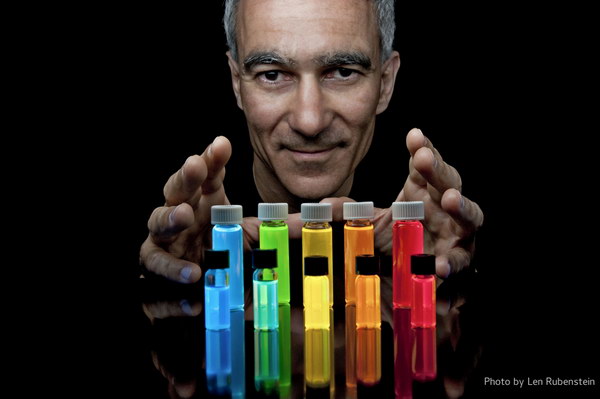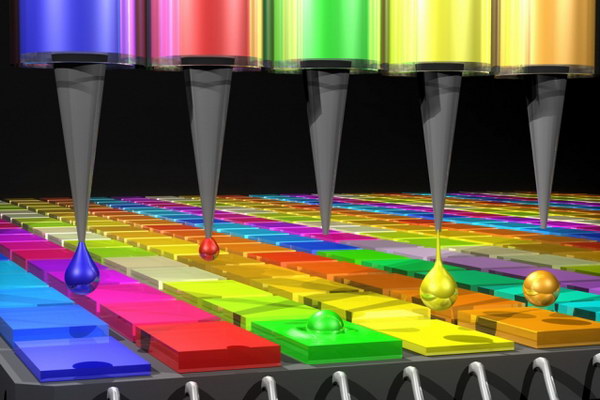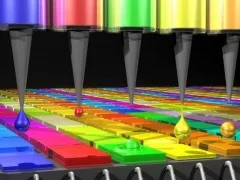Everyone in the display community knows (or should know) of the application of quantum dots to improve display colorimetry to near Rec. 2020 standards. The high spectral purity that makes quantum dots usable for this also makes them usable for other applications in your smart phone.

Recently, two researchers from MIT, Jie Bao and Moungi G. Bawendi, published a letter in the July 2nd issue of Nature on the use of quantum dots in an array to make a very, very compact spectrometer that still provided accurate spectroscopic data. Typical modern spectrometers for measuring color have bandwidths of 4nm or less throughout the visible range and, with current quantum dot technology, it is not practical to manufacture 100 different types of quantum dots each with a 4nm bandwidth. Or is it? I’ll leave that question to the quantum dot experts. What the letter shows is that you can use wider bandwidth colloidal suspensions of quantum dots and then deconvolve the narrow band spectra from the data.
 Professor Bawendi with colloidal CdSe quantum dots dispersed in hexane. Quantum confinement effects allow quantum-dot color to be tuned with particle size. (Photo by Len Rubenstein, MIT)
Professor Bawendi with colloidal CdSe quantum dots dispersed in hexane. Quantum confinement effects allow quantum-dot color to be tuned with particle size. (Photo by Len Rubenstein, MIT)
Nature felt this was an important enough topic that they published in the same issue an analysis of the technology (in much simpler language) by Norm Anheier at the Pacific Northwest National Laboratory. This can be read on-line for free by anyone interested in this quantum dot technology, but not downloaded without paying a fee. He says Bao and Bawendi applied 195 different broadband absorptive quantum dot filter at hundreds of different locations on an image sensor.
What does this mean to a smartphone user, you may ask? Jie Bao, a former MIT postdoc and currently a Visiting Associate in Physics at Caltech, said there are many possible uses by the consumer for an accurate and portable way to measure spectra. This includes diagnosing skin conditions, analyzing urine samples, tracking vital signs (including pulse and oxygen level), or measuring a person’s exposure to different wavelength bands of UV light. Less medically-oriented applications would include evaluating the color of wine. Or you could evaluate a fabric sample in a store, to see if it is a match for a material at home.
The colloidal quantum dot materials can be applied to the sensor array by a variety of techniques including ink jet printing or direct printing. For many smartphone applications, I suspect 195 different colloidal quantum dot materials are not needed – perhaps a dozen or so spread through the UV, visible and near-IR would allow for the key smartphone applications. After all, cameras only have three different sensors and they do a fairly good job of evaluating the color of visible light.
 Ink Jet printing of colloidal quantum dot materials onto an image sensor array (Image credit: Mary O’Reilly, MIT)
Ink Jet printing of colloidal quantum dot materials onto an image sensor array (Image credit: Mary O’Reilly, MIT)
Conventional spectrometers with accuracy similar to what a quantum dot spectrometer can produce are typically much more bulky, less efficient because of losses at various optical surfaces, and subject to shock and vibration problems. A quantum dot spectrometer can be quite small – the MIT prototype is described as being “the size of a quarter” – and, presumably, production versions could be made even smaller. Think of them as, ultimately, the size, ruggedness and cost of a camera module for a smartphone, which, in fact, they would closely resemble. Maybe accurate spectral sensors will be the next “must have” module built into a smartphone? –Matthew Brennesholtz

